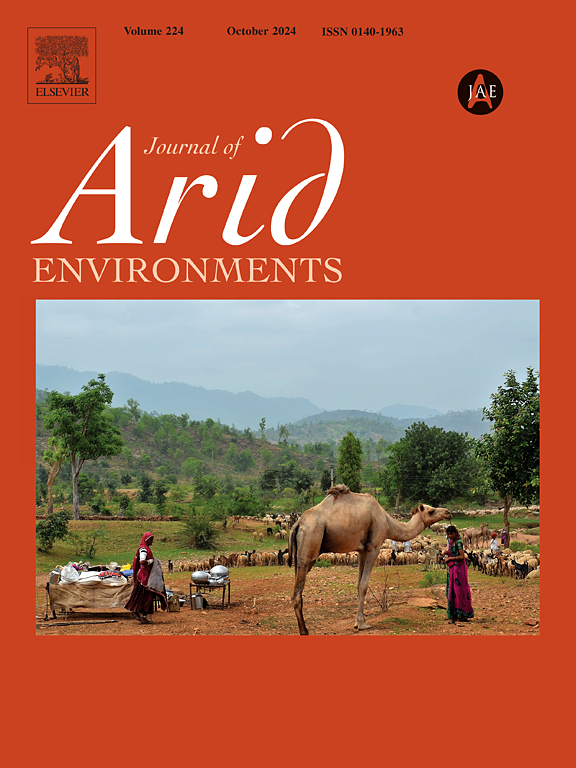在全球变暖的情况下,护理植物能提高仙人掌的存活率吗?来自濒危物种玉米-tablasensis的实验证据
IF 2.5
3区 环境科学与生态学
Q2 ECOLOGY
引用次数: 0
摘要
气候变化对干旱和半干旱生态系统构成重大威胁,干旱、高太阳辐射和极端温度限制了植物的再生。本研究评估了护理植物是否可以缓解全球变暖的影响,并提高奇瓦瓦沙漠特有的濒危仙人掌Coryphantha maiz-tablasensis的存活率。实验是在墨西哥的圣路易斯Potosí进行的,使用开顶室来模拟两个不同栖息地的变暖:一个是废弃的农田,另一个是在一种常见的护士植物Neltuma laevigata(豆科植物)的树冠下。模拟变暖显著提高了空气温度,特别是在开阔地区。尽管牧豆树树冠下的降雨量和土壤湿度较低,但与开放的对照区90%的存活率和开放的增温区完全死亡相比,该生境的仙人掌存活率明显更高——对照区100%,增温区95%。这些发现表明,直接暴露在高温和太阳辐射下对树苗是致命的。研究结果强调了仙人掌在缓冲极端小气候和支持仙人掌再生方面的重要作用。将护理植物纳入保护和恢复策略可能有助于减少未来气候变化情景下的种群损失,并确保受威胁仙人掌物种的长期持久性。本文章由计算机程序翻译,如有差异,请以英文原文为准。
Do nurse plants enhance cactus survival under global warming? Experimental evidence from Coryphantha maiz-tablasensis, a threatened species
Climate change poses a significant threat to arid and semiarid ecosystems, where drought, high solar radiation, and extreme temperatures limit plant regeneration. This study evaluated whether nurse plants can mitigate the effects of global warming and enhance the survival of Coryphantha maiz-tablasensis, a threatened cactus endemic to the Chihuahuan Desert. The experiment was conducted in San Luis Potosí, Mexico, using open-top chambers to simulate warming in two contrasting habitats: an abandoned agricultural field and beneath the canopy of Neltuma laevigata (mesquite), a common nurse plant. Simulated warming significantly increased air temperature, particularly in open areas. Although rainfall and soil moisture were lower under the mesquite canopy, cactus survival was substantially higher in this habitat—100 % in control plots and 95 % in warming plots—compared to 90 % survival in open control plots and complete mortality in open warming plots. These findings indicate that direct exposure to elevated temperatures and solar radiation is lethal to saplings. The results underscore the critical role of N. laevigata in buffering microclimatic extremes and supporting cactus regeneration. Incorporating nurse plants into conservation and restoration strategies may help reduce population loss under future climate change scenarios and ensure the long-term persistence of threatened cactus species.
求助全文
通过发布文献求助,成功后即可免费获取论文全文。
去求助
来源期刊

Journal of Arid Environments
环境科学-环境科学
CiteScore
5.70
自引率
3.70%
发文量
144
审稿时长
55 days
期刊介绍:
The Journal of Arid Environments is an international journal publishing original scientific and technical research articles on physical, biological and cultural aspects of arid, semi-arid, and desert environments. As a forum of multi-disciplinary and interdisciplinary dialogue it addresses research on all aspects of arid environments and their past, present and future use.
 求助内容:
求助内容: 应助结果提醒方式:
应助结果提醒方式:


